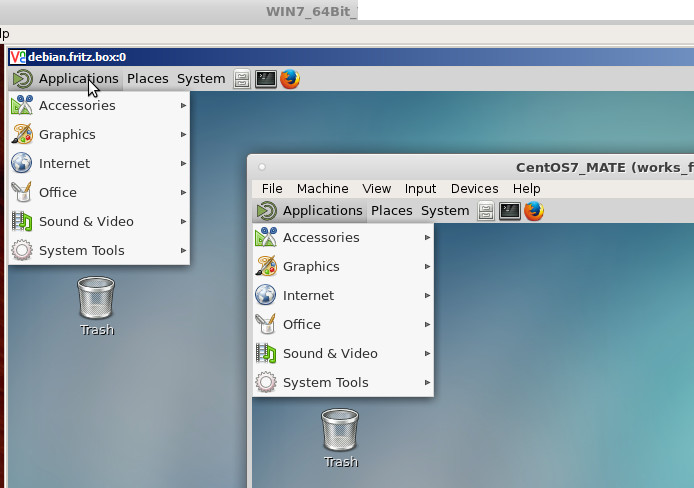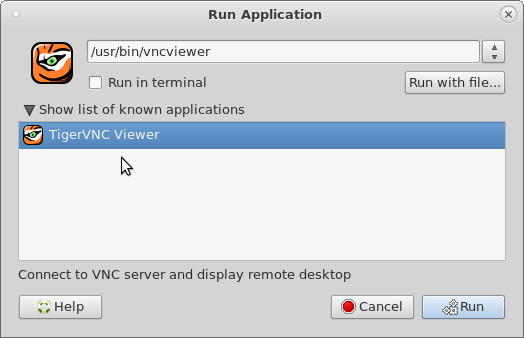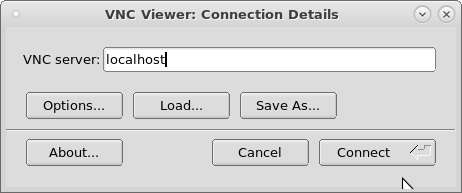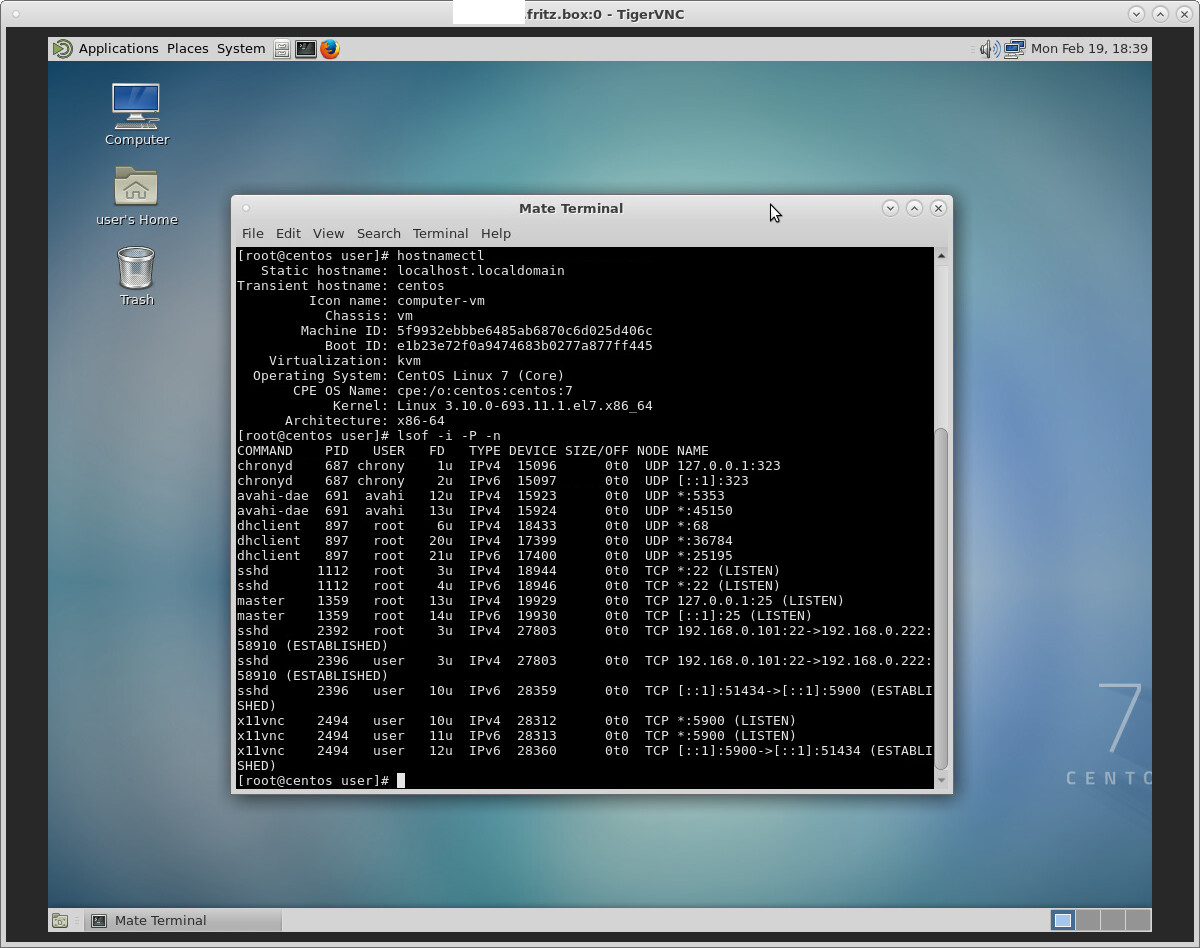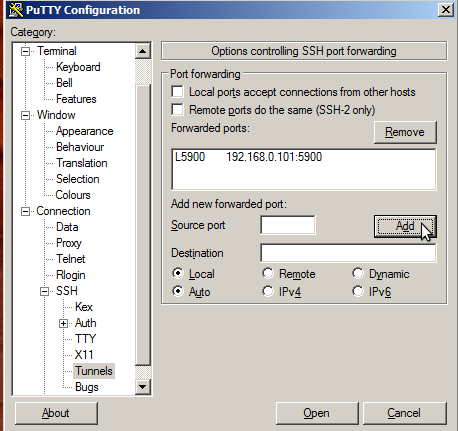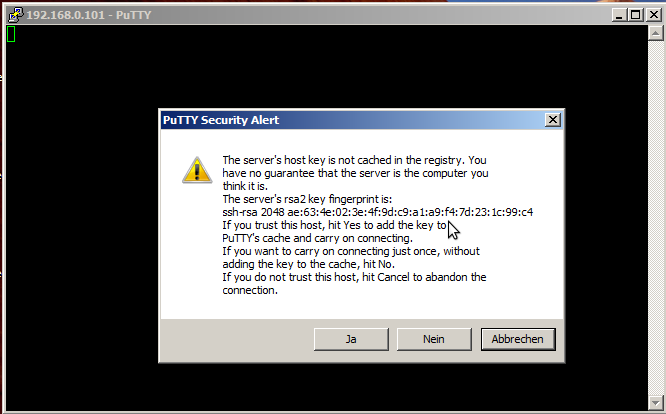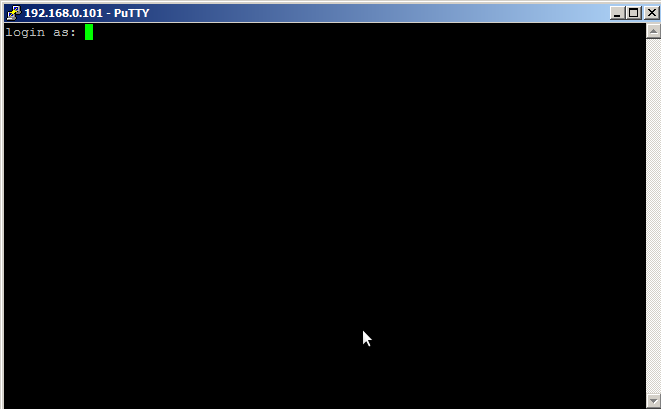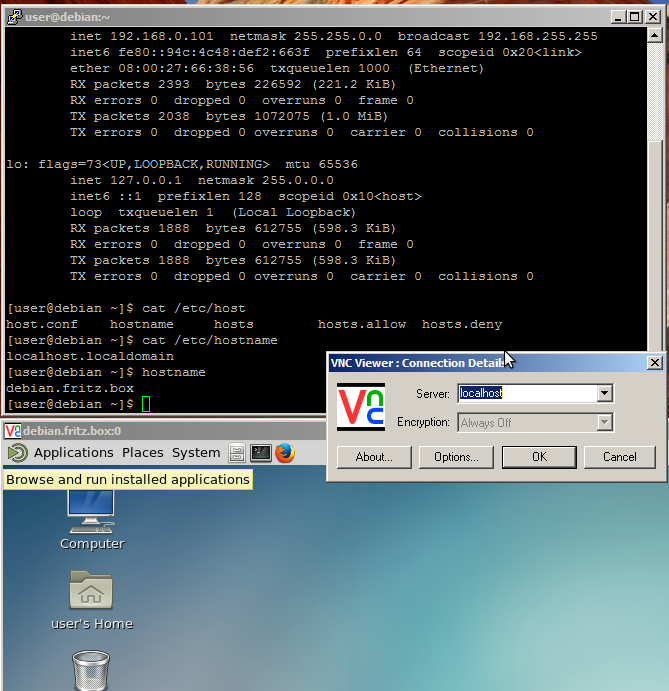(checkout vnc section of this article)
if one gets problem connecting with error message: “x11vnc error: socket: Address family not supported by protocol (97)”
then probably ipv6 needs to be disabled on client (and even if it is not used, seems like the server “requires” it)
vim /etc/default/grub # find GRUB_CMDLINE_LINUX="ipv6.disable=1" # and comment it out or remove this # GRUB_CMDLINE_LINUX="ipv6.disable=1" # then run (tested with: debian8/ubuntu) update-grub
# RedHat/Fedora/CentOS7 update grub config and menu grub2-mkconfig grub2-mkconfig -o /boot/grub2/grub.cfg # and restart and you should be able to connect reboot
it is wise to, monitor all logs while one is trying to get vnc server working… it can reveal a lot what is going on and wrong.
forget about Xvnc and tigervnc…
x11vnc is probably what the user want: https://www.digitalocean.com/community/tutorials/how-to-install-and-configure-vnc-remote-access-for-the-gnome-desktop-on-centos-7
it cost me some time and concentration to figure this out…
what user probably wants is “screen sharing” – e.g. SEE THE SAME SCREEN as if user were sitting at the monitor of the actual machine.
tightvnc client accessing screen shared by centos7 x11vnc – same desktop vnc also accessible from windows ssh tunneled via putty 0.65:
requirements: make sure user can ssh into user’s machine with a standard non-root user.
hostnamectl; # tested with
Operating System: CentOS Linux 7 (Core)
CPE OS Name: cpe:/o:centos:centos:7
Kernel: Linux 3.10.0-693.11.1.el7.x86_64
Architecture: x86-64
# on the client (the pc running vnc client connecting to another pc (vncserver)) su - root apt update apt install vncviewer; # older debian apt install tigervnc-viewer; # newer debian (12) yum install vncviewer; # centos # setup vnc server (x11vnc) on the "server" (the machine that one want's to see the desktop of) ssh -v user@192.168.0.101 su - root apt udpate apt install x11vnc Ctrl+D # log off root x11vnc -storepasswd; # generate a per user password file Enter VNC password: (give it a simple password less than 8 simple chars) Verify password: Write password to /home/user/.vnc/passwd? [y]/n y Password written to: /home/user/.vnc/passwd # start x11vnc server script # the user can find out the display number-adress # by opening a non-root-terminal on the desktop and type echo $DISPLAY vim /scripts/vnc_server.sh #!/bin/bash # define resolution server-side export DISPLAY=':0.0' xrandr --fb 1600x900 x11vnc -display :0 -auth .Xauthority -rfbauth /home/user/.vnc/passwd -forever # if one is using MATE Gnome2, one can place the line above into autostart applications # -forever = do not quit on vnc client disconnect = keep running ############################################################### #@@@@@@@@@@@@@@@@@@@@@@@@@@@@@@@@@@@@@@@@@@@@@@@@@@@@@@@@@@@@@# #@ @# #@ ** WARNING ** WARNING ** WARNING ** WARNING ** @# #@ @# #@ USER IS RUNNING X11VNC WITHOUT A PASSWORD!! @# #@ @# #@ This means anyone with network access to this computer @# #@ may be able to view and control user's desktop. @# #@ @# #@ >> If user did not mean to do this Press CTRL-C now!! <<< @# #@ @# #@@@@@@@@@@@@@@@@@@@@@@@@@@@@@@@@@@@@@@@@@@@@@@@@@@@@@@@@@@@@@# #@ @# #@ User can create an x11vnc password file by running: @# #@ @# #@ x11vnc -storepasswd password /path/to/passfile @# #@ or x11vnc -storepasswd /path/to/passfile @# #@ or x11vnc -storepasswd @# #@ @# #@ (the last one will use ~/.vnc/passwd) @# #@ @# #@ and then starting x11vnc via: @# #@ @# #@ x11vnc -rfbauth /path/to/passfile @# #@ @# #@ an existing ~/.vnc/passwd file from another VNC @# #@ application will work fine too. @# #@ @# #@ User can also use the -passwdfile or -passwd options. @# #@ (note -passwd is unsafe if local users are not trusted) @# #@ @# #@ Make sure any -rfbauth and -passwdfile password files @# #@ cannot be read by untrusted users. @# #@ @# #@ Use x11vnc -usepw to automatically use user's @# #@ ~/.vnc/passwd or ~/.vnc/passwdfile password files. @# #@ (and prompt user to create ~/.vnc/passwd if neither @# #@ file exists.) Under -usepw, x11vnc will exit if it @# #@ cannot find a password to use. @# #@ @# #@ @# #@ Even with a password, the subsequent VNC traffic is @# #@ sent in the clear. Consider tunnelling via ssh(1): @# #@ @# #@ http://www.karlrunge.com/x11vnc/#tunnelling @# #@ @# #@ Or using the x11vnc SSL options: -ssl and -stunnel @# #@ @# #@ Please Read the documention for more info about @# #@ passwords, security, and encryption. @# #@ @# #@ http://www.karlrunge.com/x11vnc/faq.html#faq-passwd @# #@ @# #@ To disable this warning use the -nopw option, or put @# #@ 'nopw' on a line in your ~/.x11vncrc file. @# #@ @# #@@@@@@@@@@@@@@@@@@@@@@@@@@@@@@@@@@@@@@@@@@@@@@@@@@@@@@@@@@@@@# ############################################################### 19/02/2018 18:19:44 x11vnc version: 0.9.13 lastmod: 2011-08-10 pid: 2416 19/02/2018 18:19:44 Using X display :0 19/02/2018 18:19:44 rootwin: 0x281 reswin: 0x2a00001 dpy: 0xf69b80 19/02/2018 18:19:44 19/02/2018 18:19:44 ------------------ USEFUL INFORMATION ------------------ 19/02/2018 18:19:45 X DAMAGE available on display, using it for polling hints. 19/02/2018 18:19:45 To disable this behavior use: '-noxdamage' 19/02/2018 18:19:45 19/02/2018 18:19:45 Most compositing window managers like 'compiz' or 'beryl' 19/02/2018 18:19:45 cause X DAMAGE to fail, and so you may not see any screen 19/02/2018 18:19:45 updates via VNC. Either disable 'compiz' (recommended) or 19/02/2018 18:19:45 supply the x11vnc '-noxdamage' command line option. 19/02/2018 18:19:45 19/02/2018 18:19:45 Wireframing: -wireframe mode is in effect for window moves. 19/02/2018 18:19:45 If this yields undesired behavior (poor response, painting 19/02/2018 18:19:45 errors, etc) it may be disabled: 19/02/2018 18:19:45 - use '-nowf' to disable wireframing completely. 19/02/2018 18:19:45 - use '-nowcr' to disable the Copy Rectangle after the 19/02/2018 18:19:45 moved window is released in the new position. 19/02/2018 18:19:45 Also see the -help entry for tuning parameters. 19/02/2018 18:19:45 You can press 3 Alt_L's (Left "Alt" key) in a row to 19/02/2018 18:19:45 repaint the screen, also see the -fixscreen option for 19/02/2018 18:19:45 periodic repaints. 19/02/2018 18:19:45 19/02/2018 18:19:45 XFIXES available on display, resetting cursor mode 19/02/2018 18:19:45 to: '-cursor most'. 19/02/2018 18:19:45 to disable this behavior use: '-cursor arrow' 19/02/2018 18:19:45 or '-noxfixes'. 19/02/2018 18:19:45 using XFIXES for cursor drawing. 19/02/2018 18:19:45 GrabServer control via XTEST. 19/02/2018 18:19:45 19/02/2018 18:19:45 Scroll Detection: -scrollcopyrect mode is in effect to 19/02/2018 18:19:45 use RECORD extension to try to detect scrolling windows 19/02/2018 18:19:45 (induced by either user keystroke or mouse input). 19/02/2018 18:19:45 If this yields undesired behavior (poor response, painting 19/02/2018 18:19:45 errors, etc) it may be disabled via: '-noscr' 19/02/2018 18:19:45 Also see the -help entry for tuning parameters. 19/02/2018 18:19:45 You can press 3 Alt_L's (Left "Alt" key) in a row to 19/02/2018 18:19:45 repaint the screen, also see the -fixscreen option for 19/02/2018 18:19:45 periodic repaints. 19/02/2018 18:19:45 19/02/2018 18:19:45 XKEYBOARD: 19/02/2018 18:19:45 Switching to -xkb mode to recover these keysyms: 19/02/2018 18:19:45 xkb noxkb Keysym ("X" means present) 19/02/2018 18:19:45 --- ----- ----------------------------- 19/02/2018 18:19:45 X 0x40 at 19/02/2018 18:19:45 X 0x5b bracketleft 19/02/2018 18:19:45 X 0x5d bracketright 19/02/2018 18:19:45 X 0x7b braceleft 19/02/2018 18:19:45 X 0x7d braceright 19/02/2018 18:19:45 X 0x7c bar 19/02/2018 18:19:45 X 0x5c backslash 19/02/2018 18:19:45 19/02/2018 18:19:45 If this makes the key mapping worse you can 19/02/2018 18:19:45 disable it with the "-noxkb" option. 19/02/2018 18:19:45 19/02/2018 18:19:45 19/02/2018 18:19:45 X FBPM extension not supported. 19/02/2018 18:19:45 X display is capable of DPMS. 19/02/2018 18:19:45 -------------------------------------------------------- 19/02/2018 18:19:45 19/02/2018 18:19:45 Default visual ID: 0x21 19/02/2018 18:19:45 Read initial data from X display into framebuffer. 19/02/2018 18:19:45 initialize_screen: fb_depth/fb_bpp/fb_Bpl 24/32/4416 19/02/2018 18:19:45 19/02/2018 18:19:45 X display :0 is 32bpp depth=24 true color 19/02/2018 18:19:45 19/02/2018 18:19:45 Autoprobing TCP port 19/02/2018 18:19:45 Autoprobing selected TCP port 5900 19/02/2018 18:19:45 Autoprobing TCP6 port 19/02/2018 18:19:45 Autoprobing selected TCP6 port 5900 19/02/2018 18:19:45 listen6: bind: Address already in use 19/02/2018 18:19:45 Not listening on IPv6 interface. 19/02/2018 18:19:45 19/02/2018 18:19:45 Xinerama is present and active (e.g. multi-head). 19/02/2018 18:19:45 Xinerama: number of sub-screens: 1 19/02/2018 18:19:45 Xinerama: no blackouts needed (only one sub-screen) 19/02/2018 18:19:45 19/02/2018 18:19:45 fb read rate: 500 MB/sec 19/02/2018 18:19:45 fast read: reset -wait ms to: 10 19/02/2018 18:19:45 fast read: reset -defer ms to: 10 19/02/2018 18:19:45 The X server says there are 13 mouse buttons. 19/02/2018 18:19:45 screen setup finished. 19/02/2018 18:19:45 19/02/2018 18:19:45 WARNING: You are running x11vnc WITHOUT a password. See 19/02/2018 18:19:45 WARNING: the warning message printed above for more info. 19/02/2018 18:19:45 The VNC desktop is: debian.domain.box:0 PORT=5900 ****************************************************************************** Have you tried the x11vnc '-ncache' VNC client-side pixel caching feature yet? The scheme stores pixel data offscreen on the VNC viewer side for faster retrieval. It should work with any VNC viewer. Try it by running: x11vnc -ncache 10 ... One can also add -ncache_cr for smooth 'copyrect' window motion. More info: http://www.karlrunge.com/x11vnc/faq.html#faq-client-caching # leave the program running # open a new terminal on the client # it should now be possible to connect to "full desktop" like this # on the client ssh user@192.168.0.101 -L 5900:localhost:5900 # open another terminal vncviewer localhost:5900 # it should connect :D # securit is provided by ssh auth and encryption, not by vnc :D # it might be usefull to disable the graphical login prompt on the server # and put the this line x11vnc -display :0 -auth .Xauthority -rfbauth /home/user/.vnc/passwd -forever # somewhere in the autostart process (STILL USING rc.local :D) vim /etc/lightdm/lightdm.conf; # comment out those two lines autologin-user=username autologin-user-timeout=0
time to connect
on the same machine that your ssh-terminal is running fire up a vnc client
centos7:
yum install vnc
# installs
tigervnc.x86_64 1.8.0-2.el7_4 @updates
installs tigervnc viewer, for windows user realvnc
possible errors
if you get:
channel 3: open failed: administratively prohibited: open failed
you will have to enable:
AllowTcpForwarding yes
in:
vim /etc/ssh/sshd_config # save quit and restart systemctl restart sshd
now RECONNECT and it should work again.
perfectly!
exactly what i wanted.
# start again x11vnc server with pixel caching and pass auth
x11vnc -display :0 -auth .Xauthority -ncache 10 -rfbauth /home/user/.vnc/passwd
but it seems a lot of vnc viewer clients DO NOT SUPPORT this feature and display funny stuff…
“x11vnc noncache – this is the pixel buffer cache region – your vnc viewer is not hiding it from you – pay no attention to the man behind the curtain” X-D
define resolution and other settings
all options: x11vnc all options.manpage.txt
what i do is save the “vnc startup command” in
vim /scripts/start_vnc.sh
currently it reads like:
x11vnc -display :0 -geometry 1366x768 -auth .Xauthority -rfbauth /home/user/.vnc/passwd
ssh tunnel from windows<-ssh->linux via putty
putty is really a neat beast… it can do ssh port forwarding from windows to linux. GOOD JOB!
open port in firewall?
INSECURE! if you use the ssh port-forwarding-tunnel you DO NOT NEED to even open a port – because you are connecting to localhost. on the client and server 😉
firewall-cmd --zone=public --add-port=5900/tcp --permanent; # open port 5900firewall-cmd --reload; # make changes active
remove tigervnc:
if you already have installed it and tried to config it in vane, get rid of it and reboot…
yum remove tigervnc-server.x86_64
yum remove tigervnc-server-minimal.x86_64
yum remove tigervnc-license.noarc
misc debug stuff:
# monitor all logs
find /var/log/ -type f \( -name "*" \) ! -path '*.gz*' -exec tail -n0 -f "$file" {} +
what display session is active?
your desktop gnome2 mate or other uses a session, vncserver needs to know what session you would like to screen-share:
loginctl list-sessions SESSION UID USER SEAT 1 1000 user seat0 loginctl show-session -p Display -p Active 1 Display=:0 Active=yes lsof -i -P -n|grep vnc; # check if vncserver is running and listening x11vnc 1888 user 10u IPv4 25838 0t0 TCP *:5900 (LISTEN) x11vnc 1888 user 11u IPv6 25839 0t0 TCP *:5900 (LISTEN) x11vnc 1888 user 12u IPv6 23301 0t0 TCP [::1]:5900->[::1]:53956 (ESTABLISHED)
Links:
http://www.karlrunge.com/x11vnc/
http://www.karlrunge.com/x11vnc/ssvnc.html
liked this article?
- only together we can create a truly free world
- plz support dwaves to keep it up & running!
- (yes the info on the internet is (mostly) free but beer is still not free (still have to work on that))
- really really hate advertisement
- contribute: whenever a solution was found, blog about it for others to find!
- talk about, recommend & link to this blog and articles
- thanks to all who contribute!



